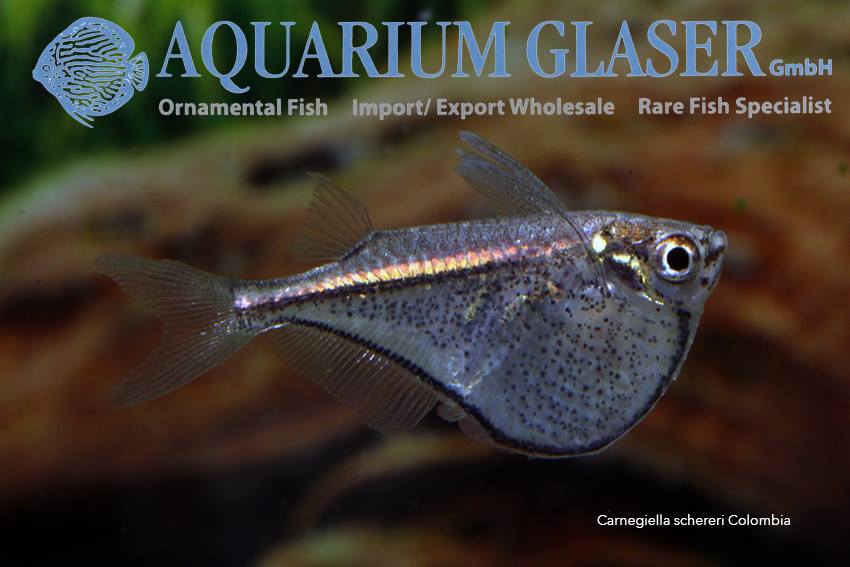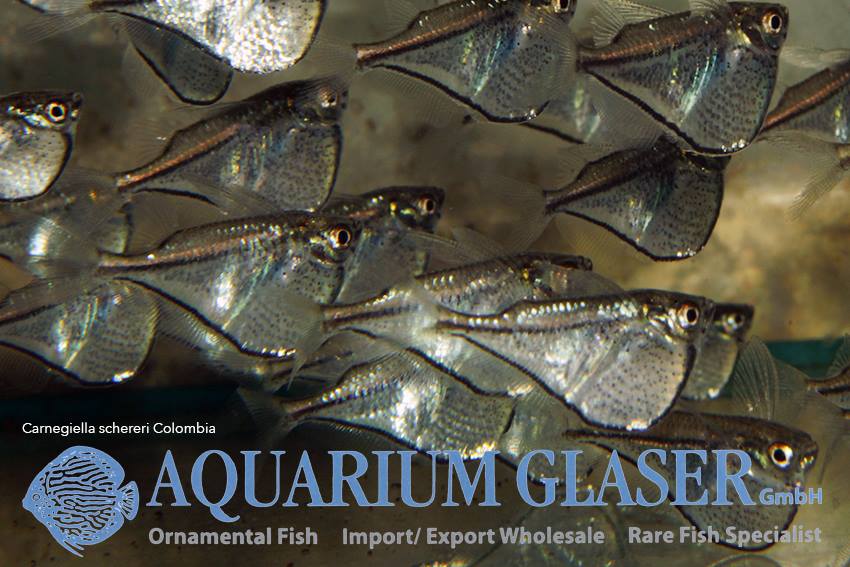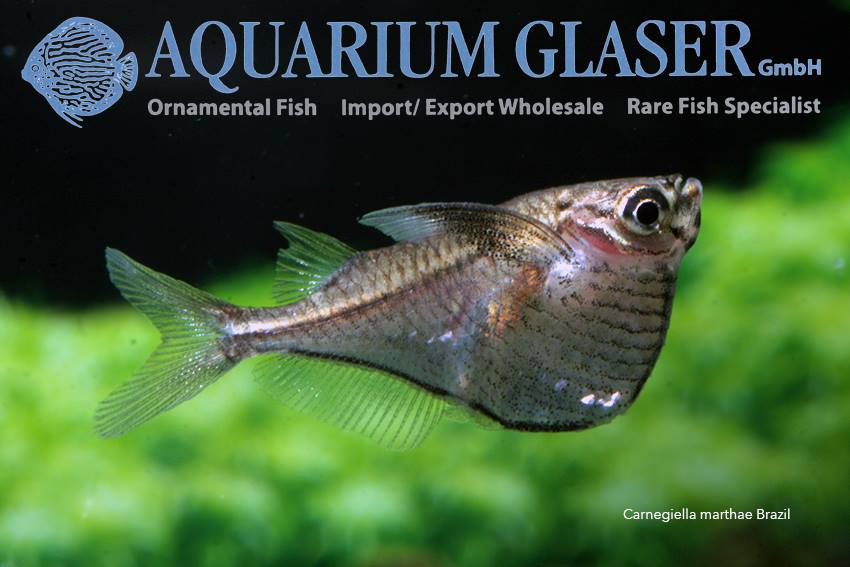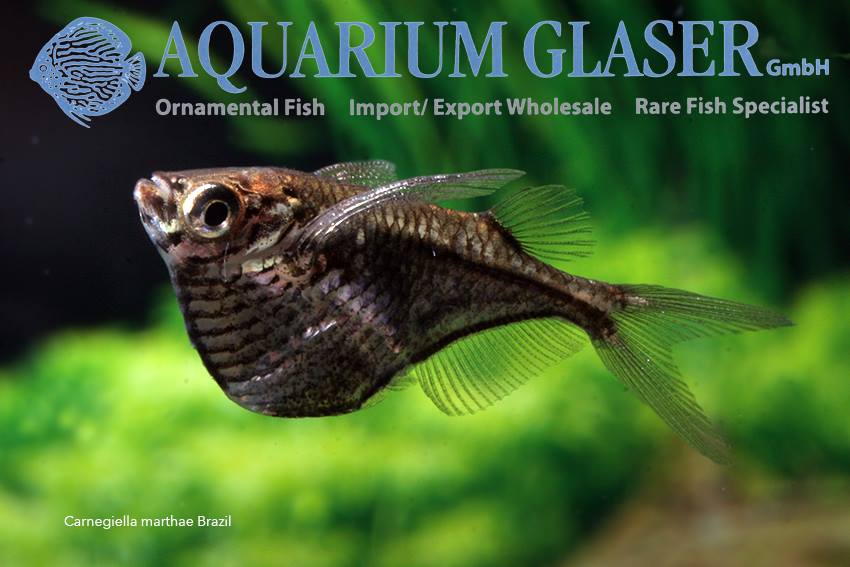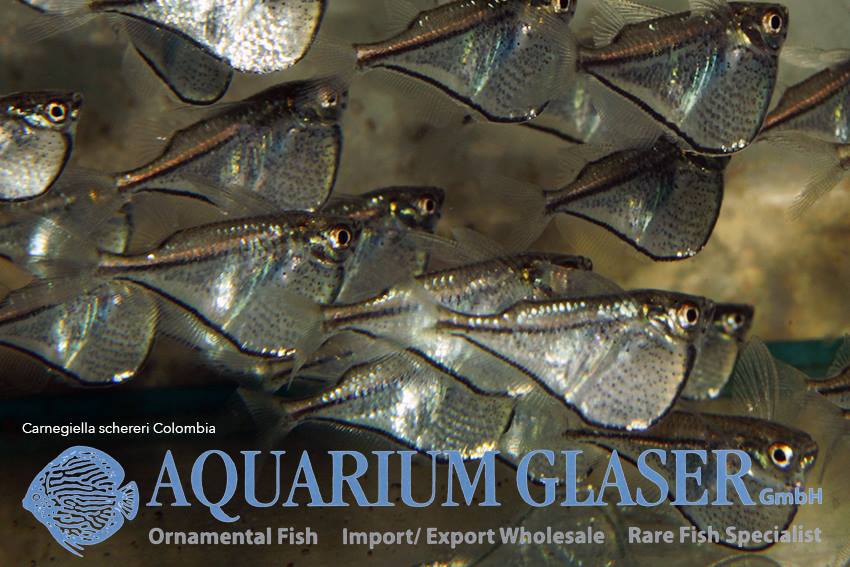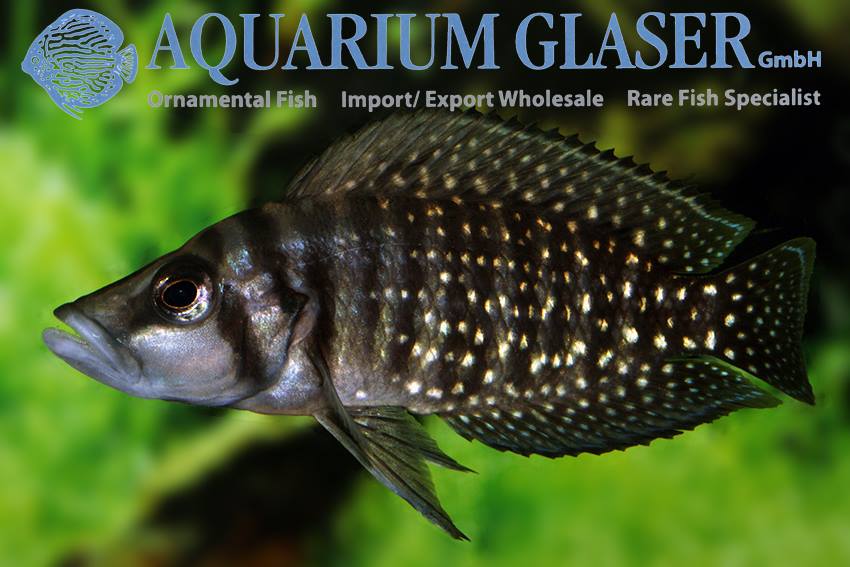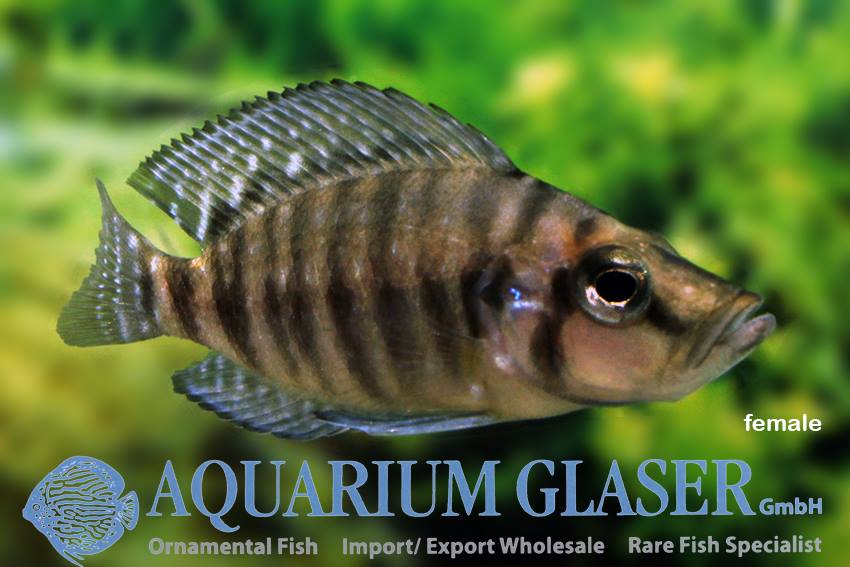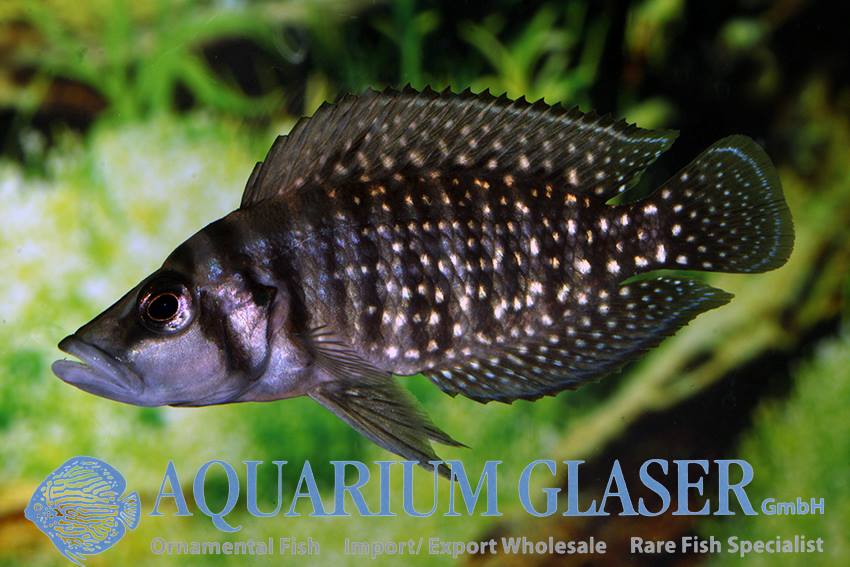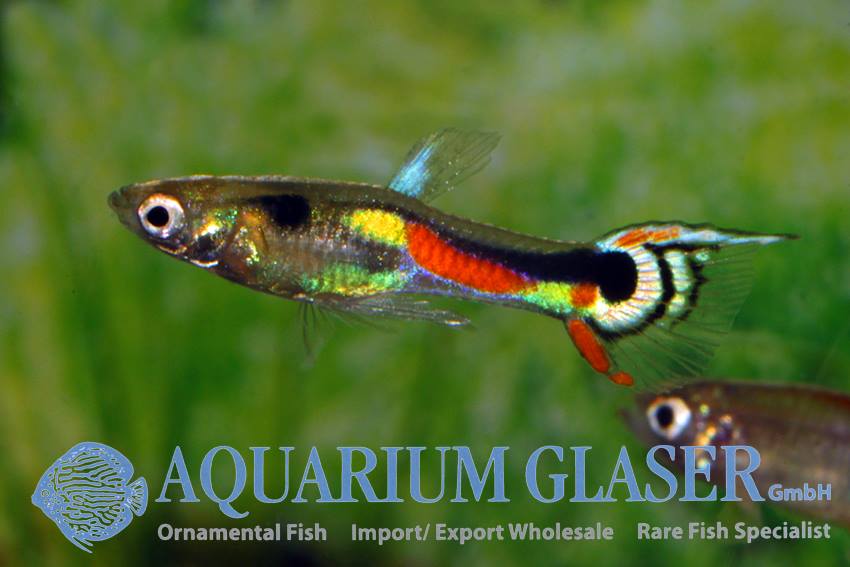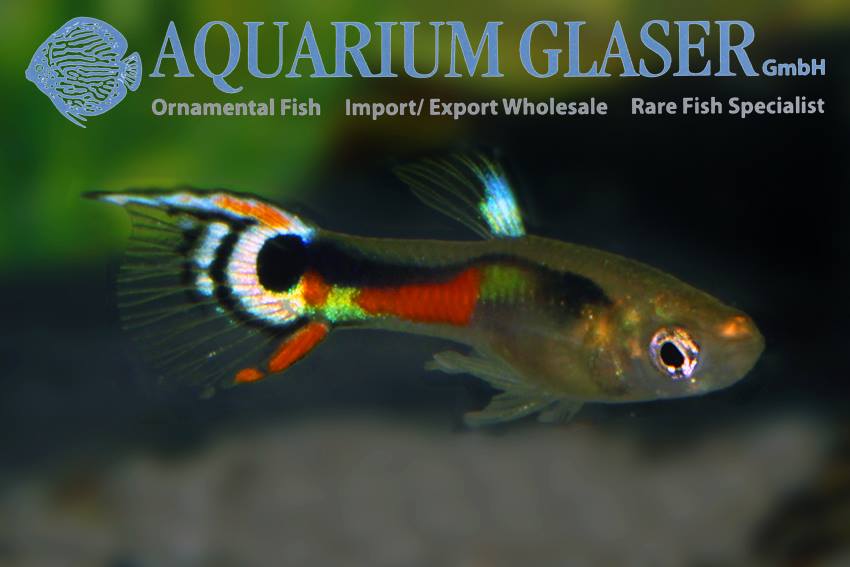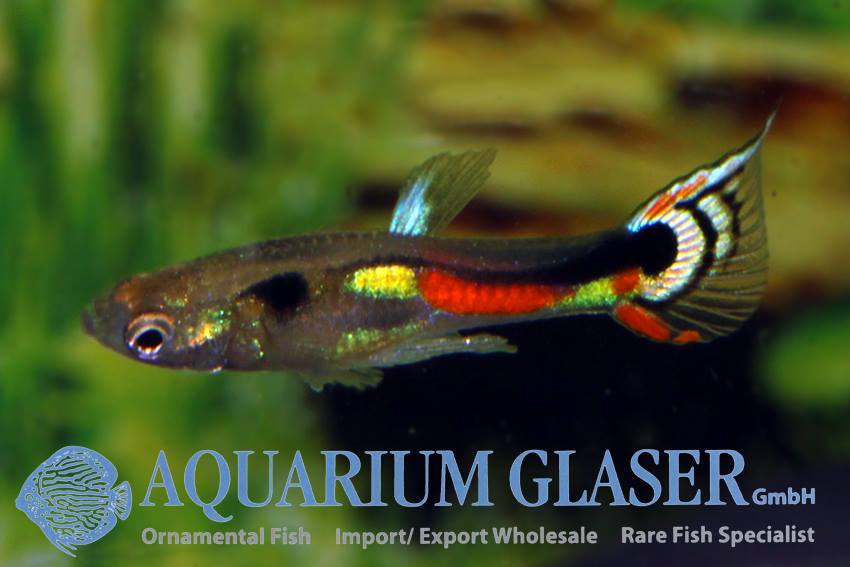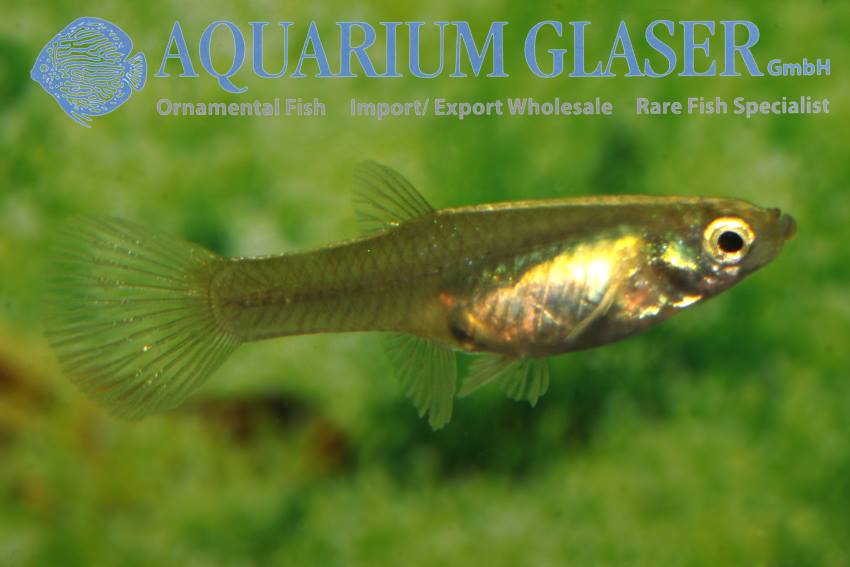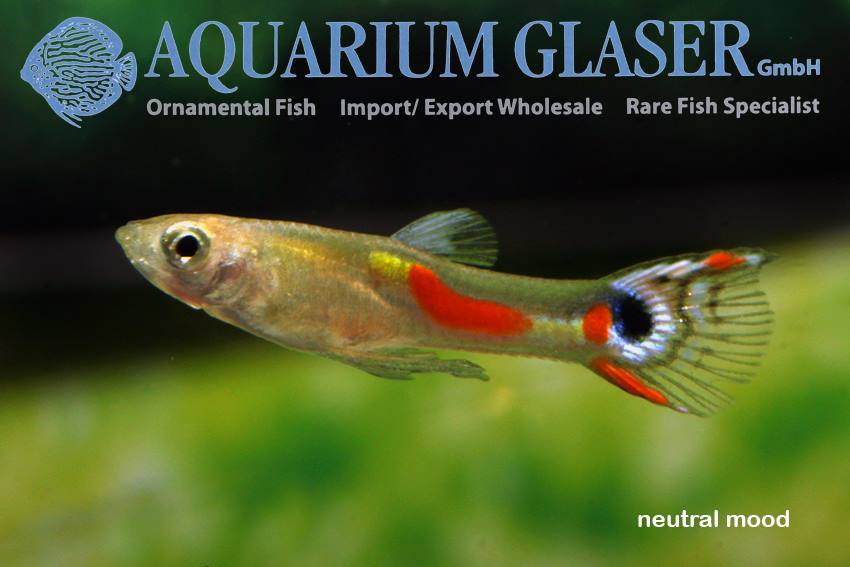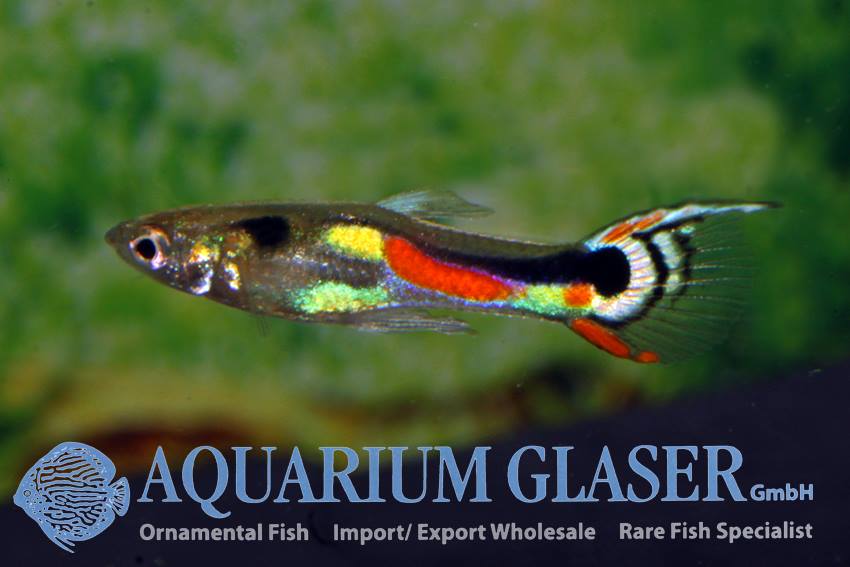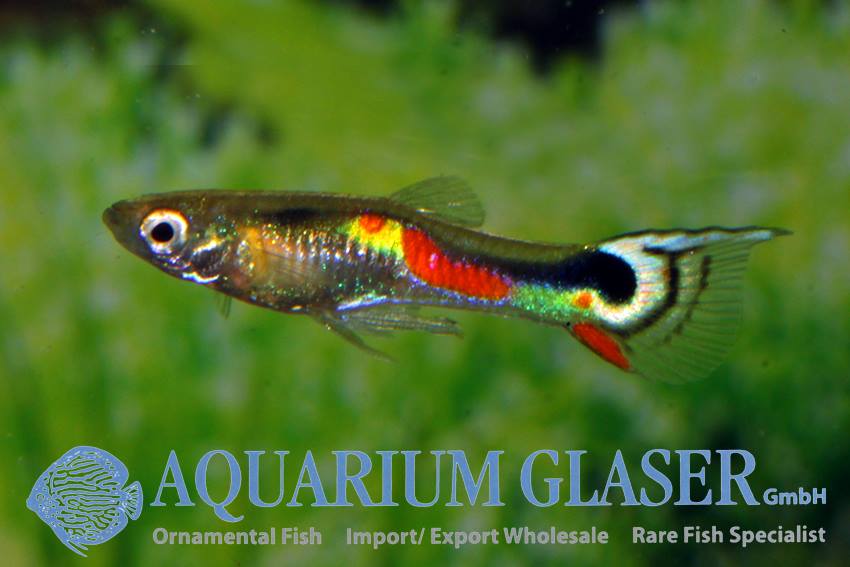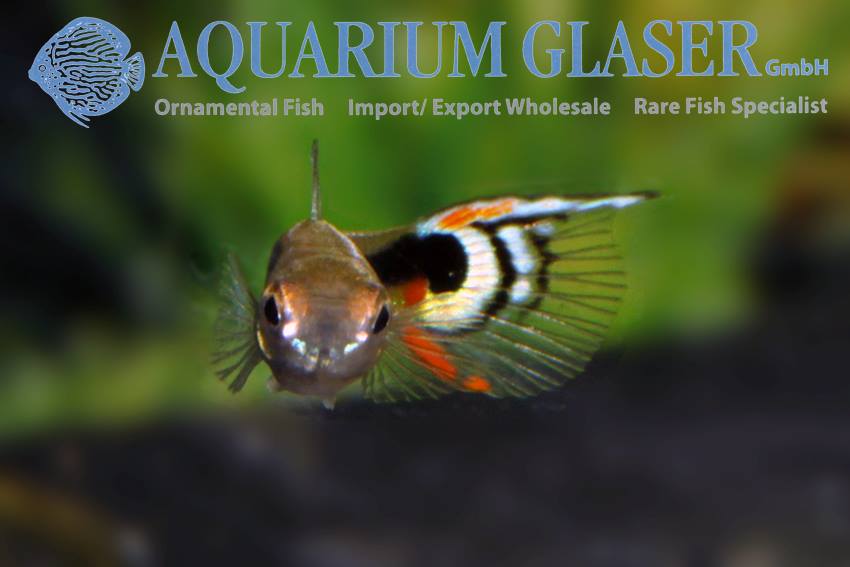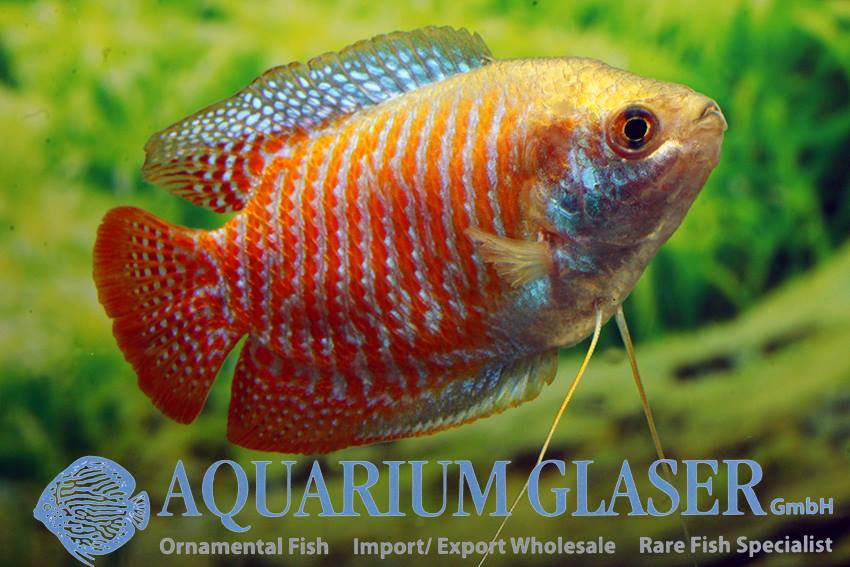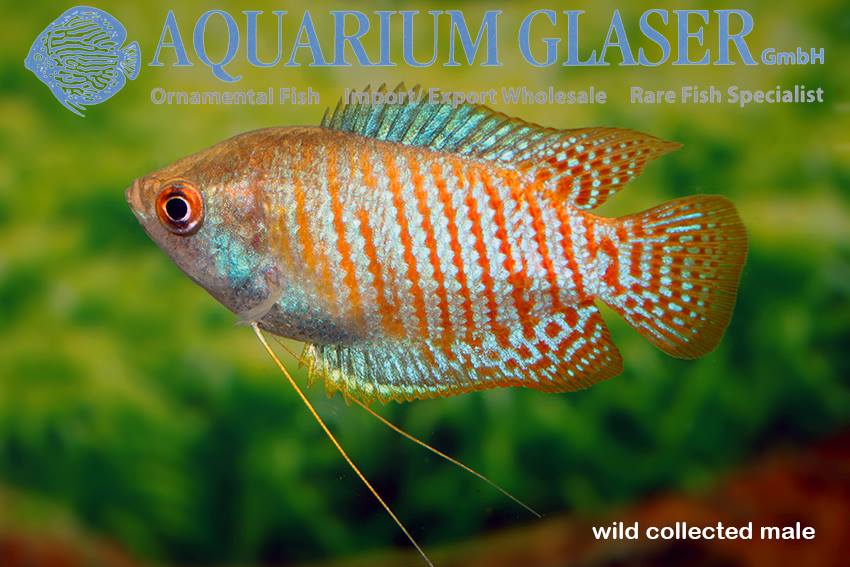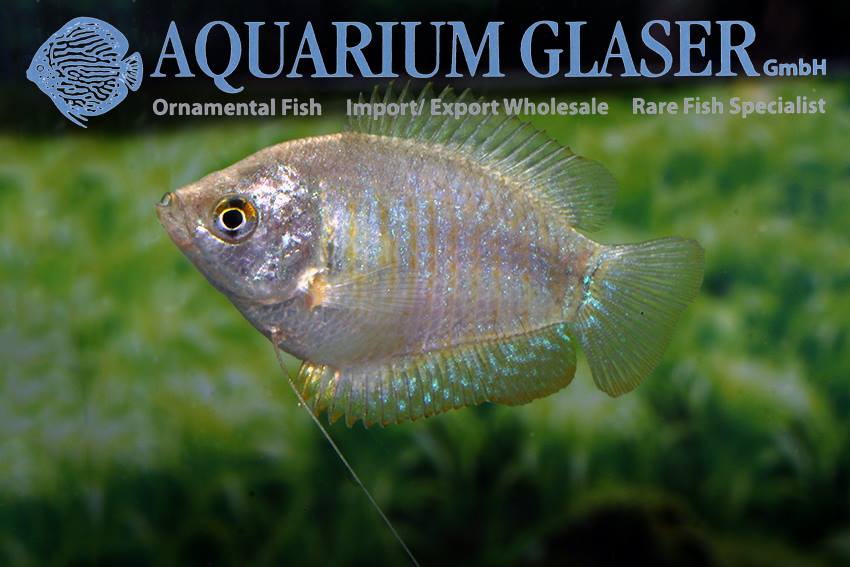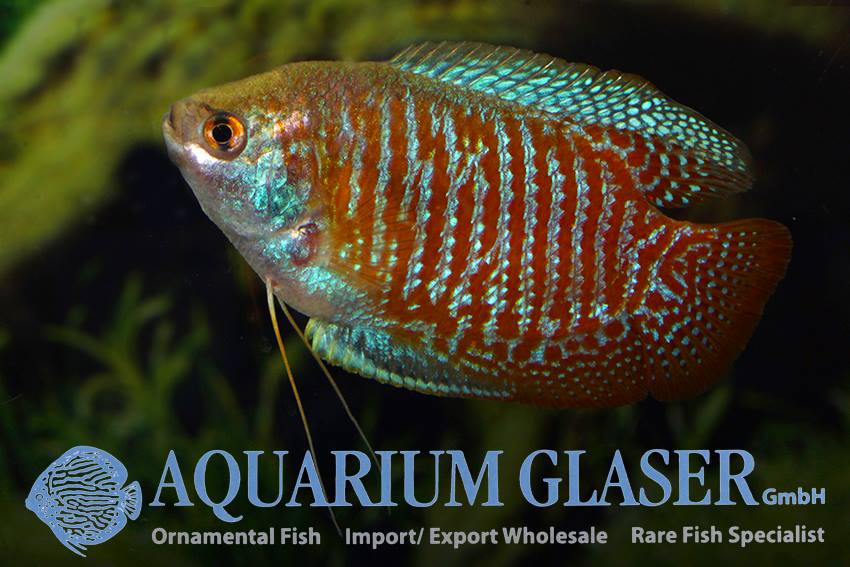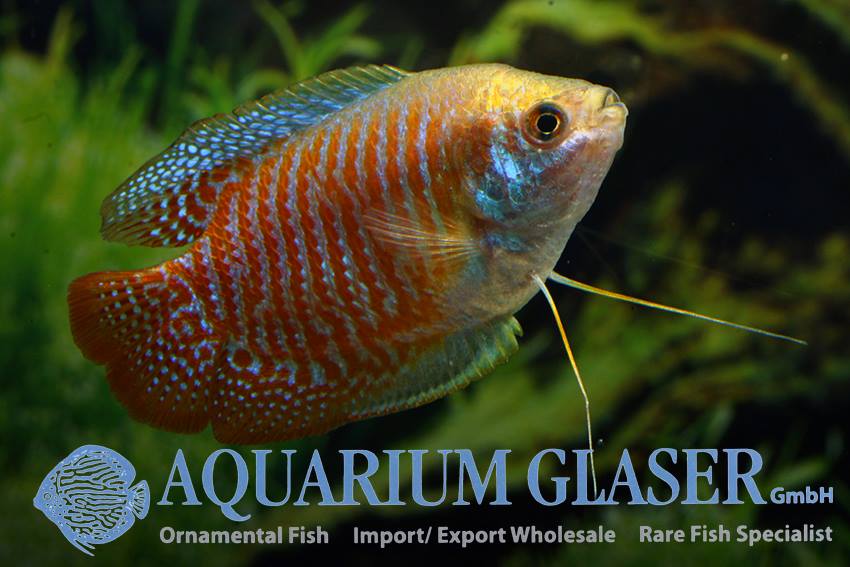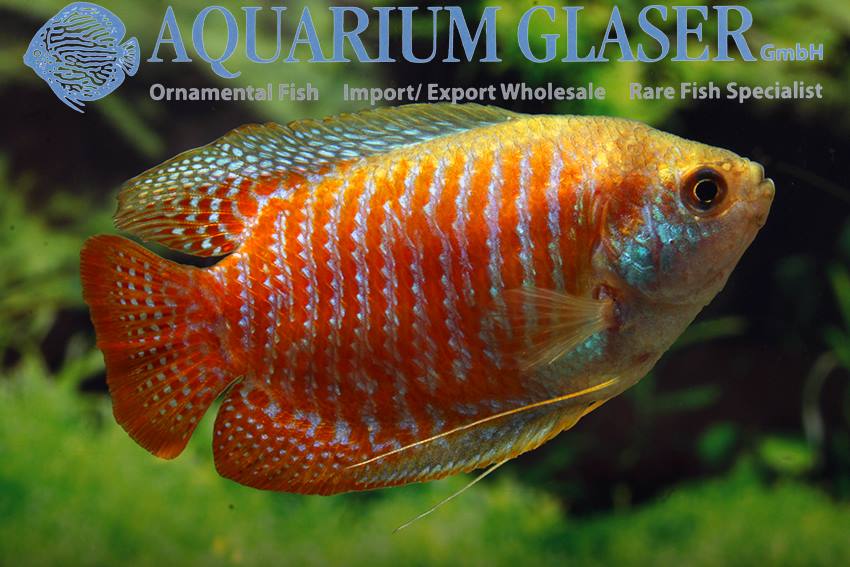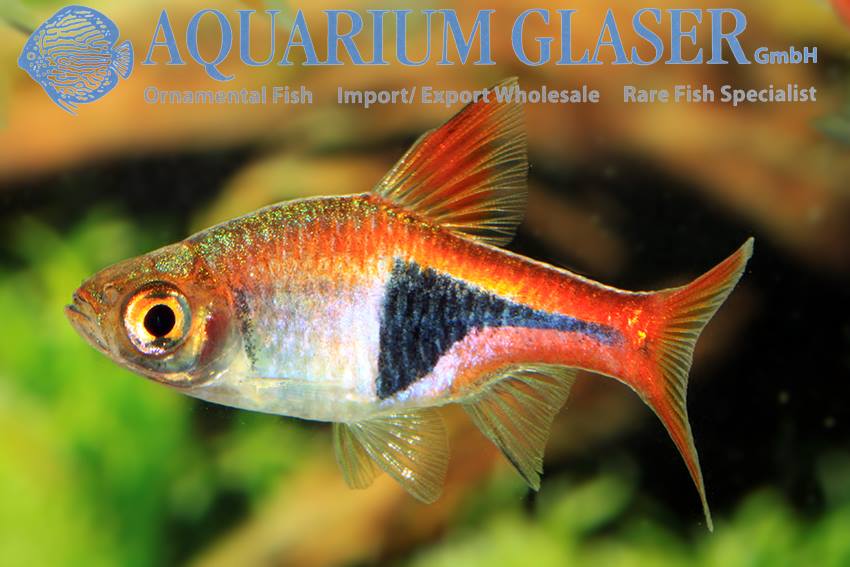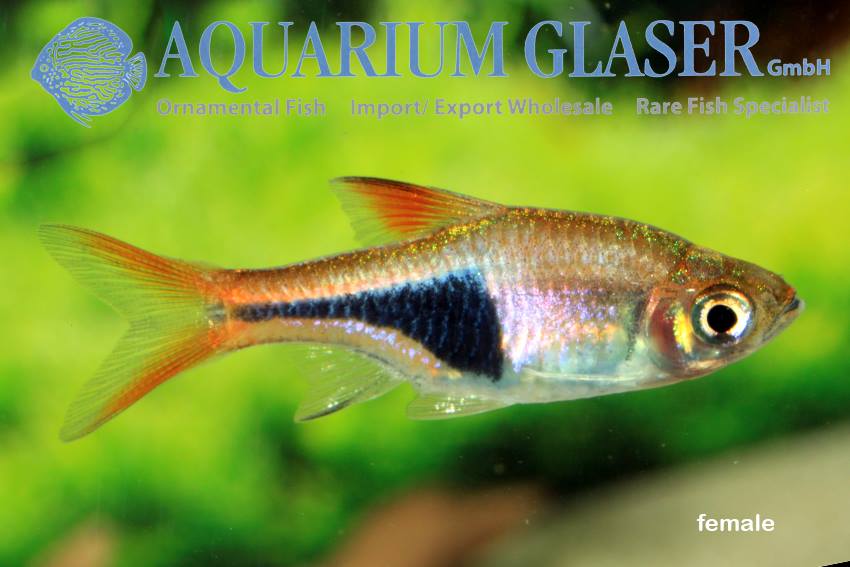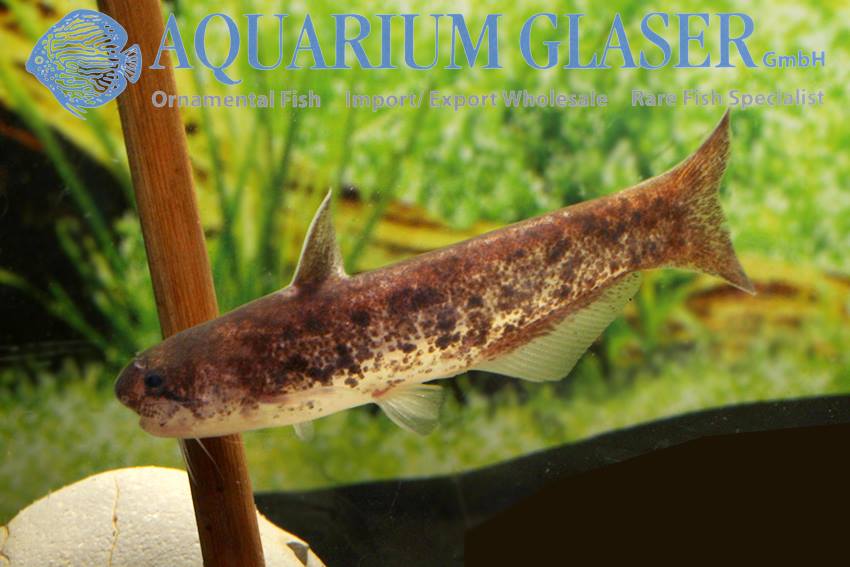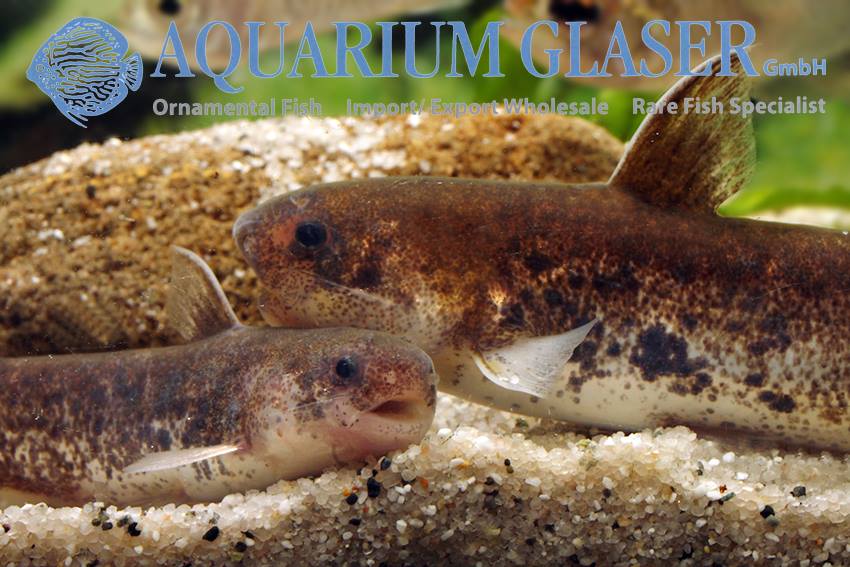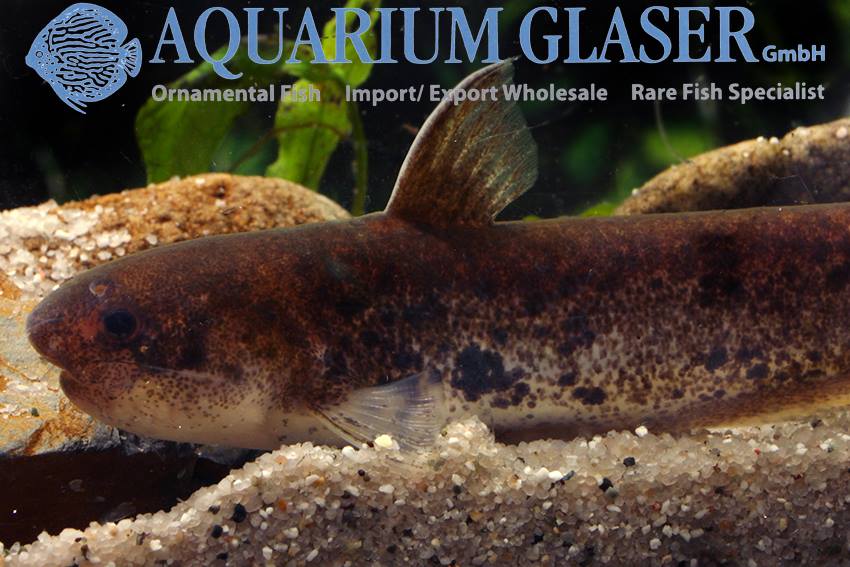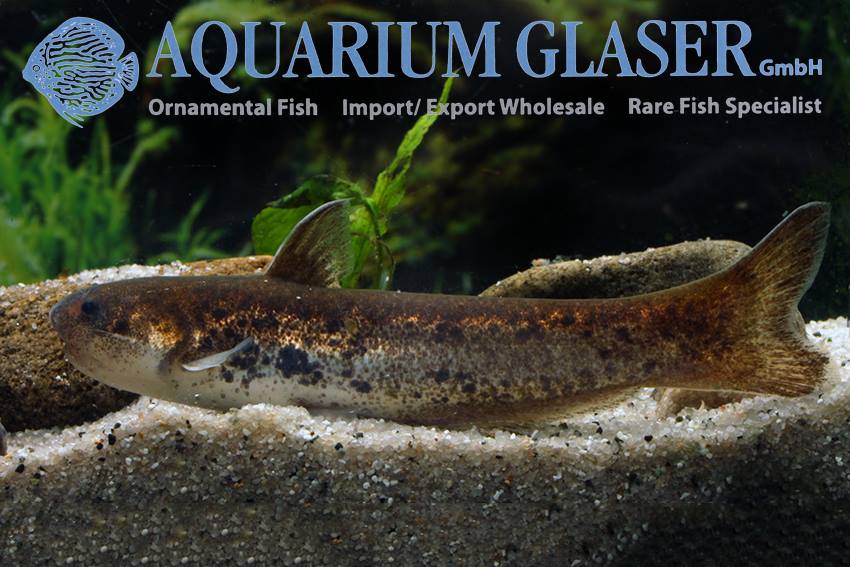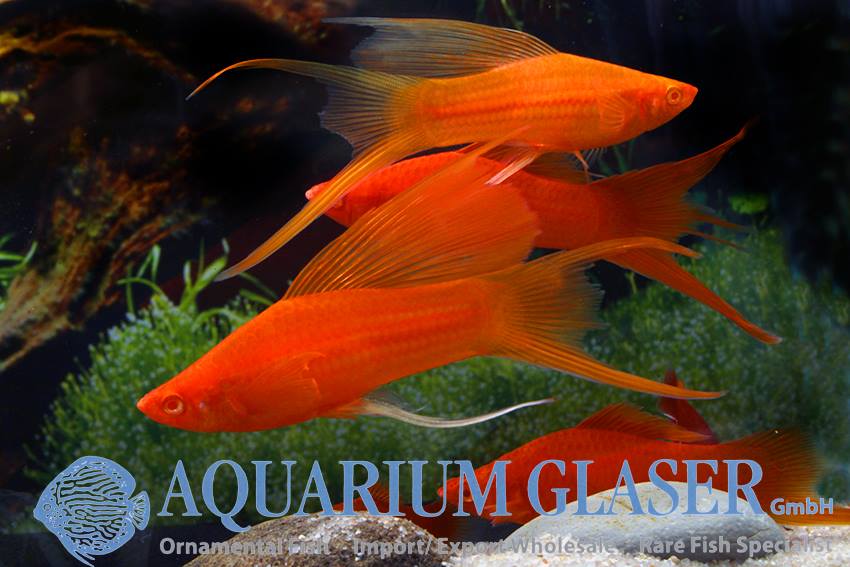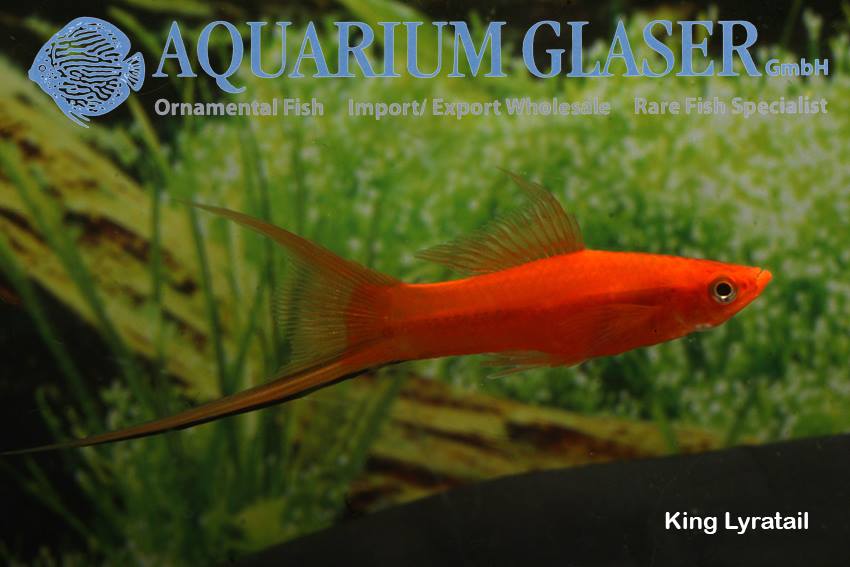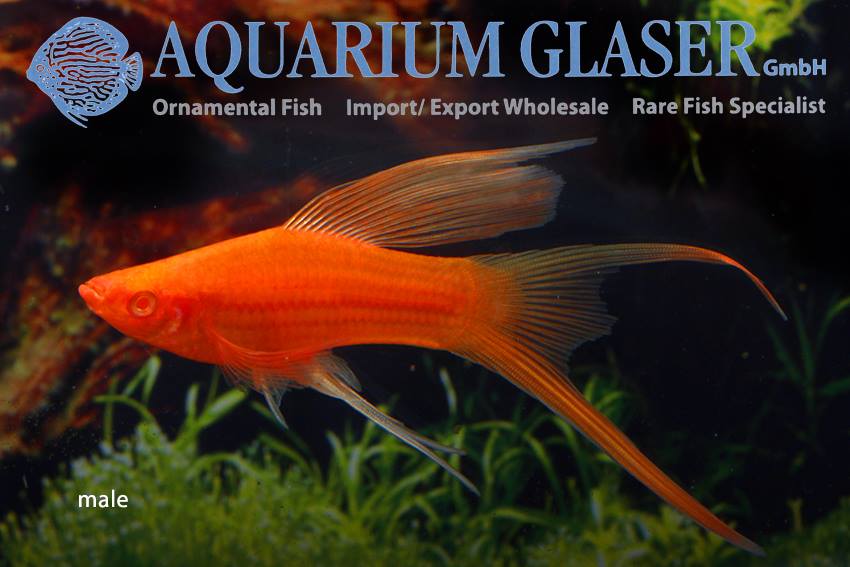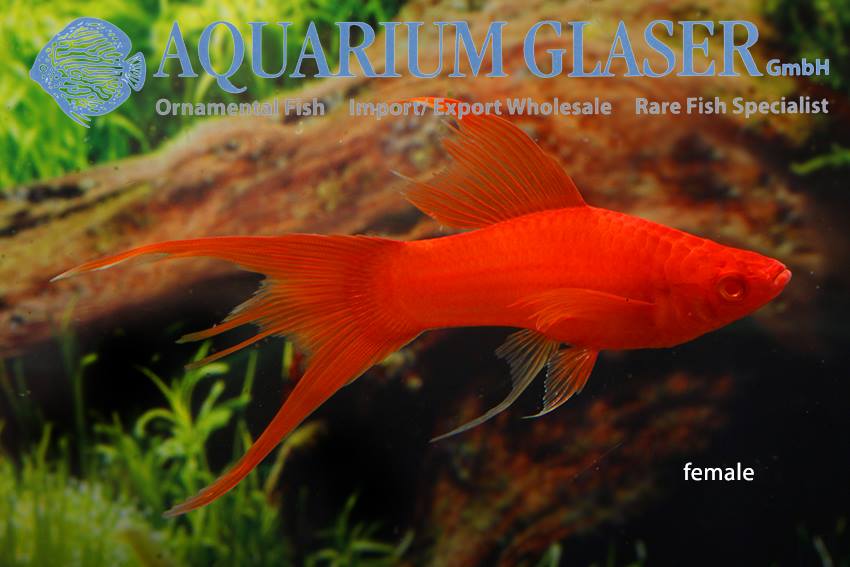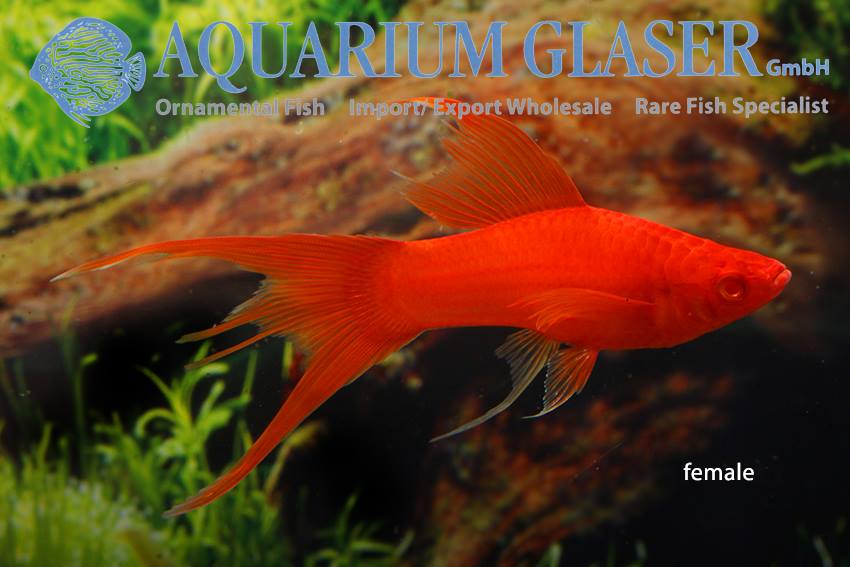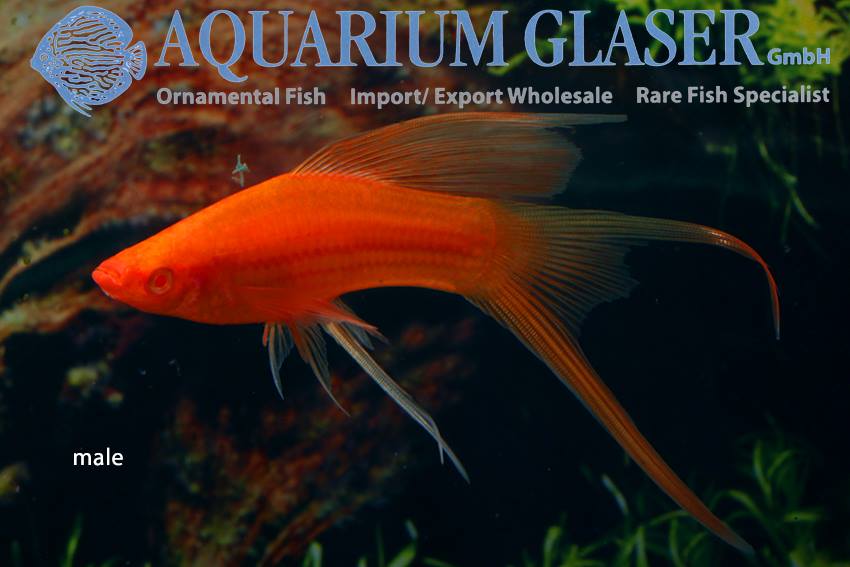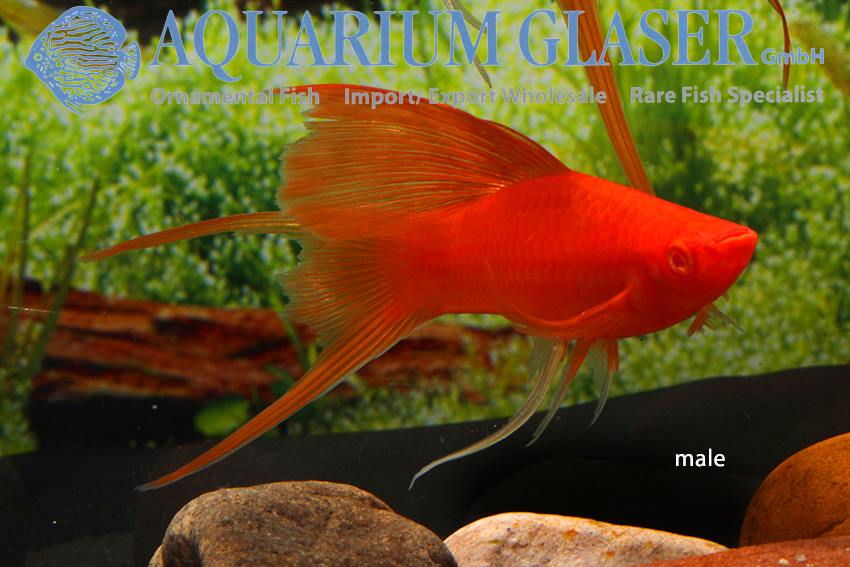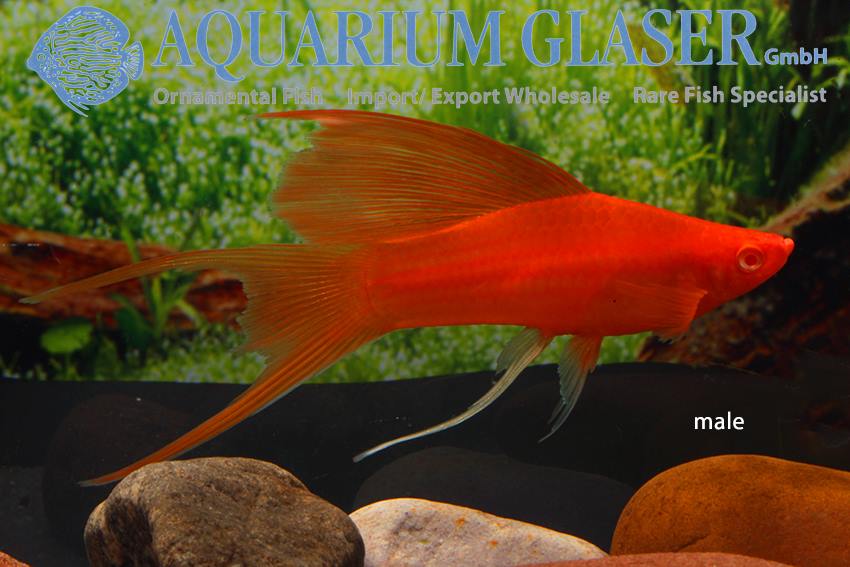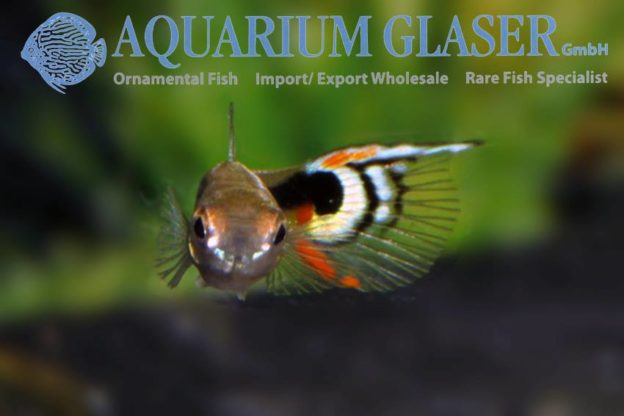
As each month we present the most popular fish imports sponsored by Aquarium Glaser!
Black winged dwarf hatchets
There are two species of Black winged dwarf hatchets recognized. These charming little creatures hardly reach 3 cm in length. From Peru and Colombia Aquarium Glaser get occasionally Carnegiella schereri. The fish, however, are usually sent under the name of „ Gasteropelecus sternicla , size small“. In fact both species have a very similar coloration, but C. schereri lacks, like all species of Carnegiella, the adipose fin, which is always present in species of Gasteropelecus.
From Brazil they get Carnegiella marthae. Both species of dwarf hatchet are so closely related that in former times they were considered only as subspecies to each other. In that case they were named Carnegiella marthae marthae and Carnegiella marthae schereri. Both species can easily distinguished by the coloration. C. schereri has always a spotted belly, in C. marthae the belly is striped.
Altolamprologus calvus
This cichlid belongs to the most attractive species of the family from Lake Tanganyika. It attains a maximum length of about 13 cm. Despite the lurky look the fish is one of the most peaceful species of cichlid at all. One can say as a rule: if another fish is too large to serve as food it will become simply ignored. And astonishing enough: although Altolamprologus calvus is for sure a predator in the wild it happily accepts even flake food in the aquarium…
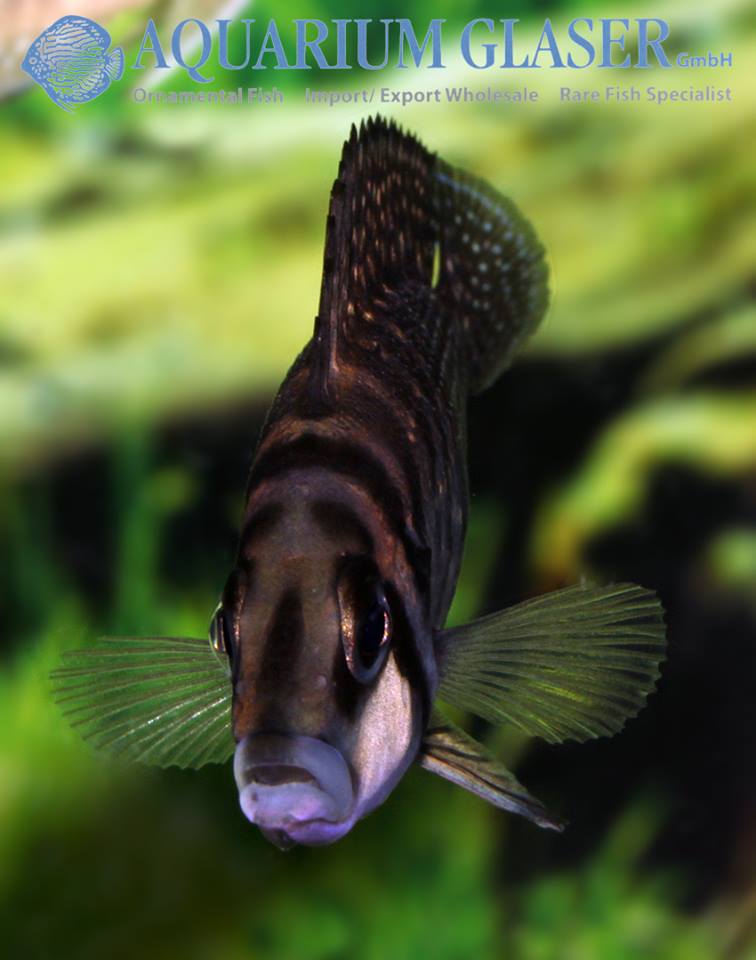
Poecilia wingei, Endler´s Livebearer „White Peacock“
The breeding of the different sports of Endler Livebearer has become a popular branch of the hobby. There are a lot of sports, some artifical – developed by cross-breeding or selective breeding – some are different looking populations that appear in the wild. The White Peacock is such a wild type. The ancestors of the fish in the trade have been collected by Armado Pou in 2004 from the Laguna de los Patos North Lake, according to the information available from specialized web pages. For sure the fish are now much more uniformly coloured than the animals living in the wild, but they still have their extremely lively habit and they have stayed so wonderful small and dainty. Displaying males become much darker in coloration, compared with the neutral coloration. We obtain our fish from our proofed breeder in Thailand. The matching females are also available.
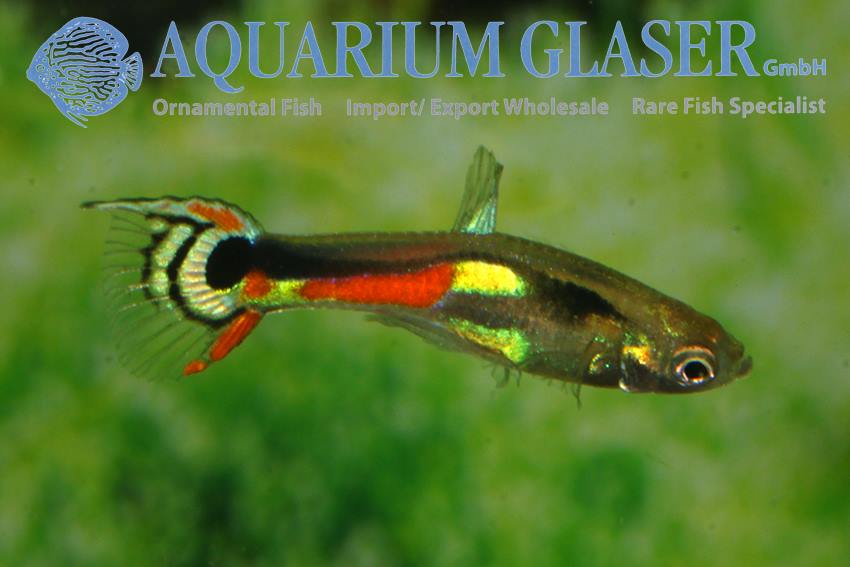
Colisa lalia
The dwarf gourami is the perfect ornamental fish. It unites magnificent coloration, a peaceful mind and an interesting behaviour. It becomes only 3 cm (wild caughts) or 6 cm (artifical bred sports) long and due to its calm habit it can be kept even in smaller tanks. And if it comes to feeding: the dwarf gourami happily accepts any type of fish food, may it be dried, frozen or alive. The only condition: food particles must not be too big, because the dwarf gourami has a tight throad. Sometimes the dwarf gourami is named Trichogaster lalius, but this is an opinion we do not follow.
Trigonostigma heteromorpha wild
The harlequin barb (Trigonostigma heteromorpha) belongs to the very few very special species of ornamental fish of historical importance for the hobby. More than 100 years ago it was discovered around Kuala Lumpur and in the botanical garden of Singapore. It was imported to Germany alive only a short time later. People were crazy for that fish! It was extremely expensive. And it proofed impossible to breed! Finally hobbyists learned from the harlequin barb that the chemical composition of the water has an important influence on the successful breeding of several tropical fishes. Nowadays the harlequin barb belongs to the most often bred ornamental fish at all. Sadly the breeders do not always look for a proper quality of their fish. From time to time we can offer wild collected harlequin barbs from Malaysia. These animals are real beauties and let us understand the excitement of our ancestors in the hobby…
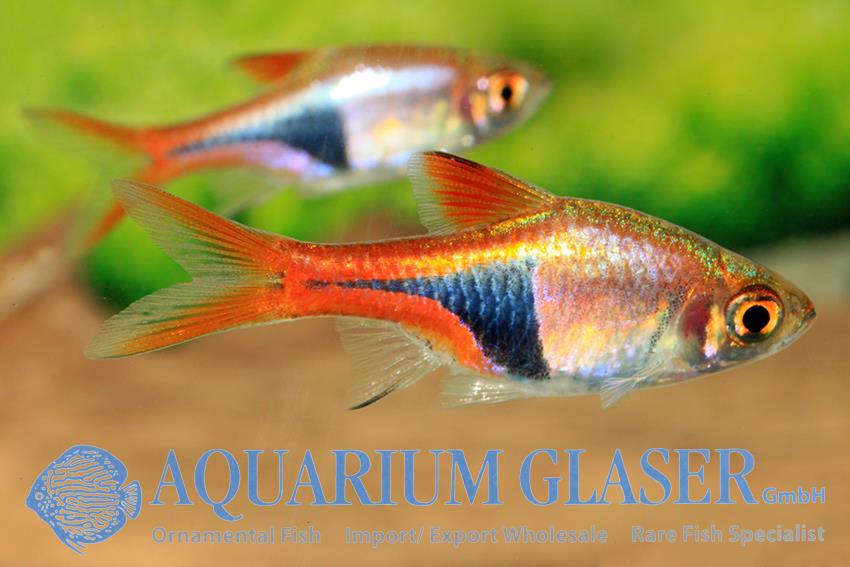
Cetopsis orinoco
Whale catfish have obtained their popular name from the fact that they look a bit like a stranded whale. Another whale-like feature is the fact that the catfish possess a second pair of nares that are place high on the head, right above the eye. This reminds a lot in the blowholes found in whales. Whale catfish are not popular in the hobby. Out of the 42 extant species only 2-3 sometimes appear in the market and even these have to be considered as absolute rarities. So catfish enthusiasts are probably really glad that we were able to import another species of that family, namely Cetopsis orinoco from Colombia. This about up to 10 cm long species looks quite similar to the better known Cetopsis coecutiens, but differs a lot in coloration. Cetopsis orinoco belongs to the species in which the sexually active males develope a thread-like extensison on top of the dorsal fin. As most specimens reported so far from museum collections have been picked up from streams with rather strong current we recommend to keep them in the aquarium under similar conditions.
Xiphophorus hellerii King Lyratail
Lyretail swordtails are a sport of Xiphophorus hellerii and rather difficult to breed. Usually only the females can be used for breeding. They need „normal“ males for mating, because in most Lyretail males the fin that is used for insemination in livebearers, the so called gonopodium, is much prolonged and useless. Among ornamental fish breeders the word of „playing Mikado with cooked spaghetti“ is well known… If one uses „normal“ males for breeding Lyretails only a part of the offspring has the Lyretail phenotype. This is the reason why Lyretails are usually more expensive than other sports of the swordtail.
But very rarely Lyretail male swordtails appear that have prolonged fins, but a normal gonopdium. These are called „King Lyretail Swordtails“. Dieter Bork has bred some King Lyretail males for us that are already offspring from King Lyretail fathers. The latter have been selected by us from imported Lyretails. We are very curious now if we will be abe to establish a pure breeding King Lyratail strain.
For comparision we show you pictures of the large Vienna Lyratail Swordtails we can offer from time to time.
Anzeige







